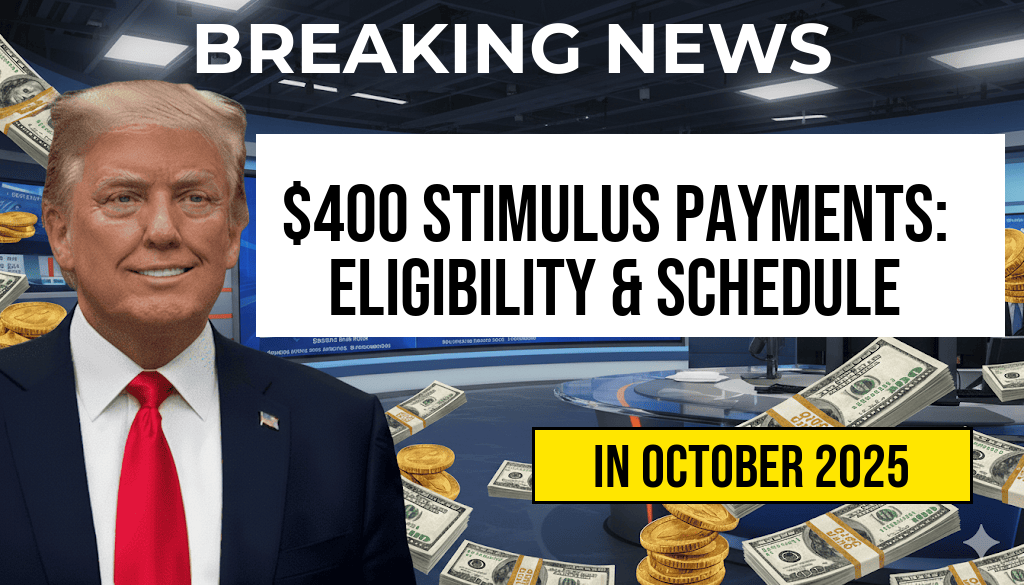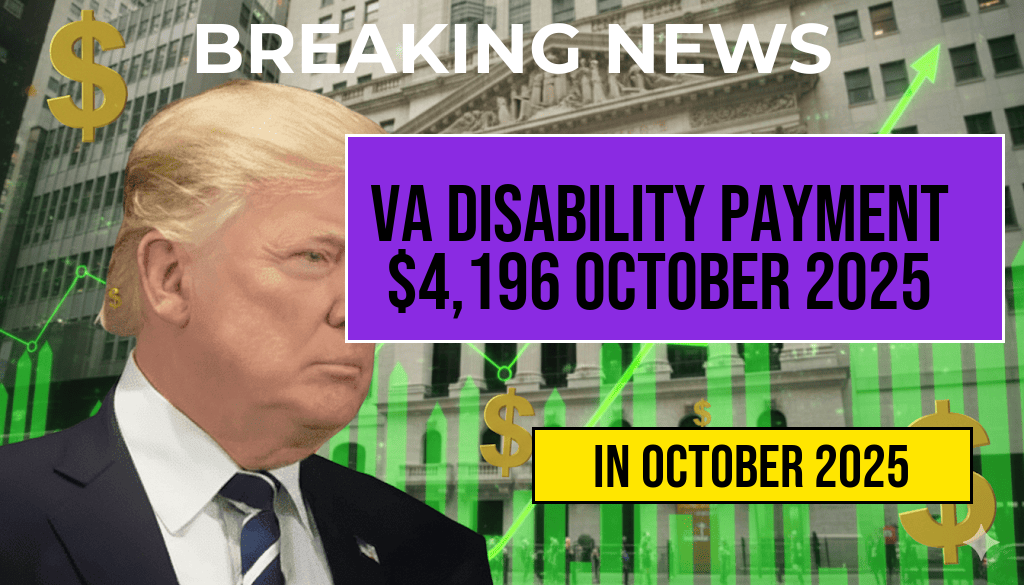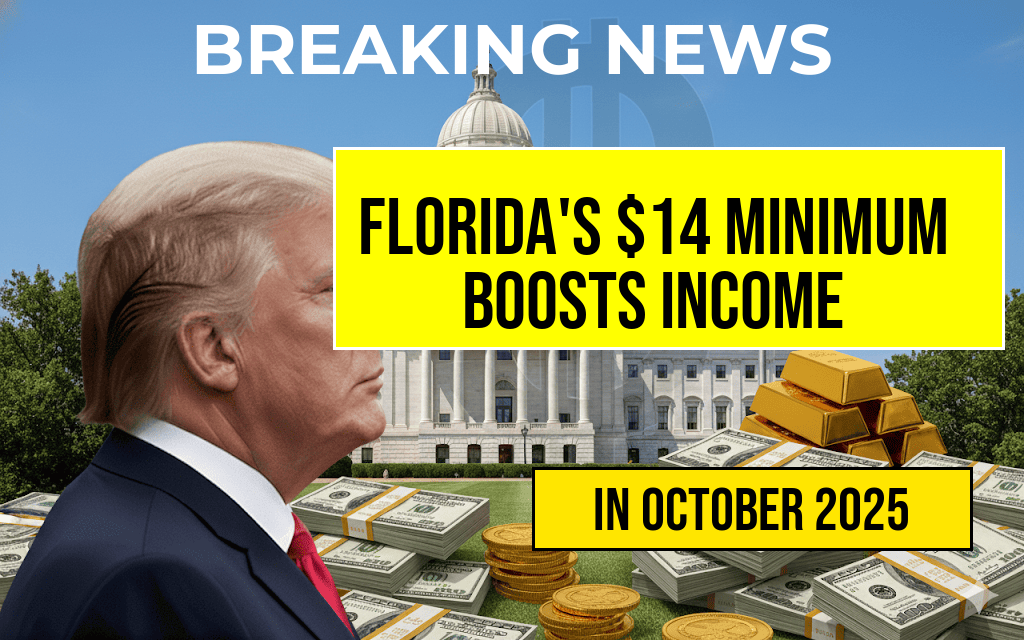A new $400 stimulus payment is now available to eligible Americans, providing financial relief amid ongoing economic challenges. The program, designed to support households across the country, has outlined specific eligibility criteria and a detailed payment schedule. Unlike previous stimulus efforts, this initiative aims to directly bolster consumer spending and help cover essential expenses such as utilities, groceries, and transportation. Eligible individuals and families should review the criteria carefully to ensure their qualification and stay informed about the timeline for receiving their payments. The process involves a straightforward application, with payments distributed via direct deposit or check, depending on the recipient’s preferred method. As government agencies finalize the distribution, many Americans are eager to understand when they can expect their $400 and how to confirm their eligibility. For comprehensive details, including eligibility requirements and the complete payment schedule, this article provides an in-depth overview based on the latest government updates and official guidelines.
Who Qualifies for the $400 Stimulus Payment?
Eligibility Criteria
- Income Limits: The program primarily targets individuals and families with incomes below specific thresholds. For single filers, the cutoff is typically set at $75,000 annual income, while married couples filing jointly can qualify if their combined income does not exceed $150,000.
- Residency Status: Applicants must be U.S. residents or citizens residing within the country and have a valid Social Security number.
- Filing Status: Eligible recipients generally need to have filed a tax return for the previous year or meet specific criteria if they are non-filers.
- Age Requirements: The payment is available to individuals aged 18 and older, including qualifying dependents in certain cases, depending on the program’s scope.
Additional Considerations
- Recipients must not be claimed as dependents on someone else’s tax return unless they meet specific criteria outlined by the program.
- Individuals with delinquent federal or state debts may experience delays or reductions in their payment.
How to Apply or Register for the Payment
Most eligible individuals will receive their $400 stimulus payment automatically, based on their recent tax filings. However, those who did not file taxes or are new to the program should visit the official portal to register. The process typically involves providing basic personal information and verifying identity through secure channels.
Key Steps to Follow
- Visit the official government portal dedicated to the stimulus program, often linked through federal or state websites.
- Complete the application form with accurate personal and banking information.
- Submit required documentation if necessary, such as proof of income or residency.
- Wait for confirmation of your application status and payment schedule.
For detailed guidance and to avoid scams, applicants are encouraged to use official sources such as the IRS website or the relevant state agencies.
Payment Schedule and Distribution Method
Expected Timeline
| Application Period | Payment Distribution Dates |
|---|---|
| January 15 – February 15, 2024 | March 1 – March 15, 2024 |
| February 16 – March 15, 2024 | March 16 – March 31, 2024 |
| March 16 – April 15, 2024 | April 1 – April 15, 2024 |
Payment Methods
- Direct Deposit: Most recipients will receive funds directly into their bank accounts if banking information was provided during application.
- Check: For those without bank details on file, physical checks will be mailed to the address provided.
Additional Resources and Important Notes
Participants should monitor official communications from the IRS or relevant state agencies for updates and confirmation of payment receipt. It’s advisable to keep personal and banking information up to date in government portals to prevent delays. Additionally, taxpayers are encouraged to review their income status and filing history to verify eligibility.
For further details, the IRS provides comprehensive guidance on stimulus payments, including frequently asked questions and assistance options. Stay informed through reputable sources like Wikipedia and Forbes.
Frequently Asked Questions
What is the $400 stimulus payment, and who is eligible to receive it?
The $400 stimulus payment is a financial support provided to eligible individuals and families. To qualify, recipients must meet specific income and filing requirements outlined in the program guidelines.
How can I determine if I meet the eligibility requirements for the $400 stimulus payment?
You can verify your eligibility by reviewing the official criteria, which typically include income thresholds, filing status, and residency. Detailed information is available on the official government website or through your local tax office.
When will the payment schedule be announced, and how will I receive my $400?
The complete payment schedule will be published by the authorities once finalized. Payments are usually distributed via direct deposit or check, depending on the recipient’s chosen method during the application process.
Are there any additional requirements I need to fulfill to receive the stimulus payment?
Yes, besides eligibility, recipients may need to file a tax return or register with specific government portals. Ensure all personal information is up-to-date to prevent delays in receiving your payment.
Can I receive the $400 stimulus payment if I have already received previous stimulus funds?
Yes, previous stimulus payments do not disqualify you from receiving the new $400 payment, provided you meet the current eligibility requirements. The payments are separate and based on the latest criteria outlined by the program.






